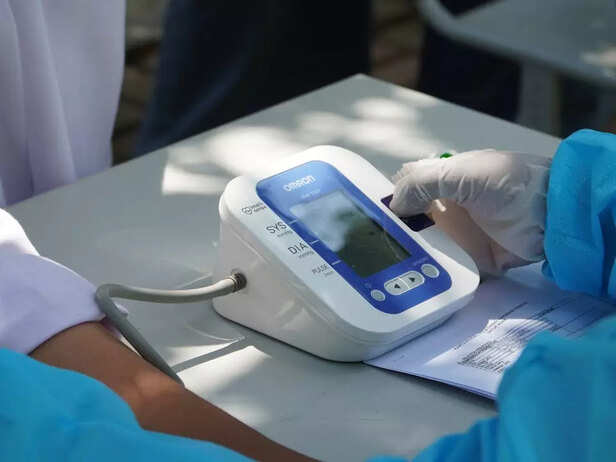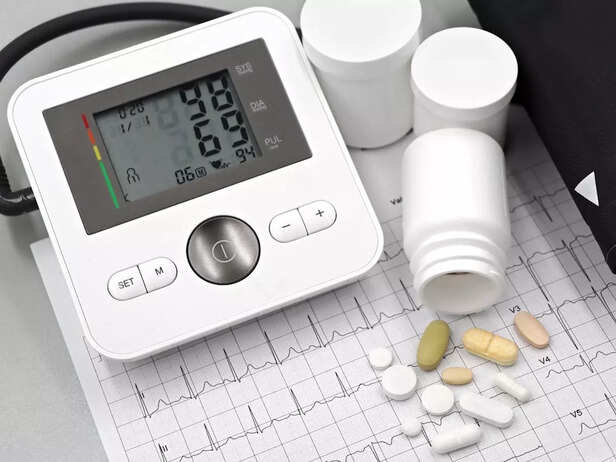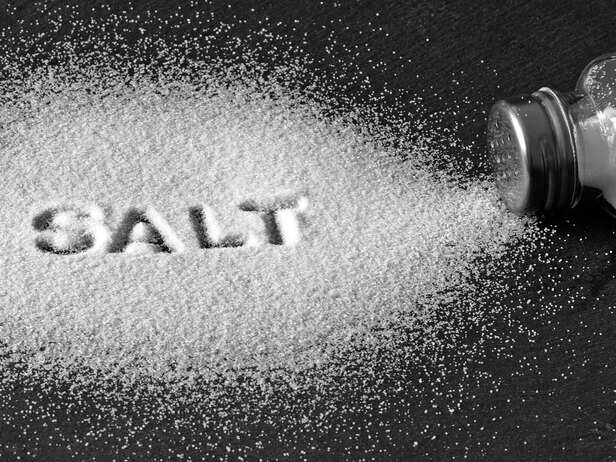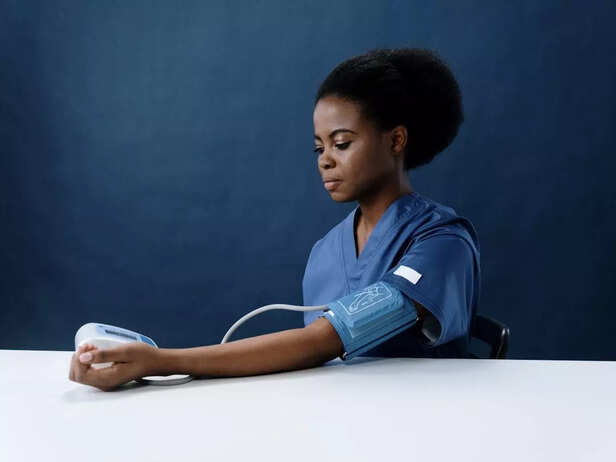5 Tips to Manage High Blood Pressure due to Kidney Diseases
Ritika | Sep 17, 2025, 19:40 IST
A healthy man
( Image credit : Pexels )
High blood pressure and kidney disease fuel each other. And that obviously is not a good sign. But to break this loop, you do not need any extraordinary magic, rather just small, simple but consistent steps, like not forgetting or skipping your medications, cutting down on salt, monitoring yourself, and a few others. Here's how to manage your blood pressure due to kidney diseases in five easy steps.
When your kidneys start failing, blood pressure doesn’t stay in the background. It becomes the bully in the room. High pressure damages the kidneys faster, and sick kidneys make pressure shoot up even more. It’s a loop that only spins harder if you let it.
A lot of people shrug at the word “BP.” They think it’s routine, a number you check at the chemist once in a while. But with kidney disease, every number matters. One missed pill, a salty meal, a couple of kilos creeping on the scale, and the kidneys pay for it.
The upside? Small, boring changes actually work. Nothing fancy. Just steady habits. And doctors will tell you the same five things, again and again. Let’s put them out straight.

Blood pressure goals for kidney patients aren’t the same as for everyone else. Those neat “120/80” posters you see in clinics? They don’t always apply. Some people with chronic kidney disease (CKD) need their systolic pressure to be lower, but some can’t handle it that low without dizziness or falls.
That’s why “ask your doctor” isn’t just a line. You need to know your number. And you need to measure it properly at home, not just once a month in the clinic.
Too high, kidneys get hammered. Too low, you risk fainting spells or worse. So the rule is simple: don’t self-decide. Don’t copy your neighbour’s target. Sit down with your nephrologist and ask: “What number am I really aiming for?”

Not all BP tablets are equal when your kidneys are on the line. ACE inhibitors and ARBs are the usual heroes. They bring the pressure down, sure, but they also protect kidneys, especially if protein is leaking into your urine. That’s why doctors lean on them, unless there’s a solid reason not to.
And yes, they come with checks. Your potassium, your creatinine, doctors keep a close eye. That’s not fussing, that’s safety.
There’s also a newer group, SGLT2 inhibitors. They started as diabetes drugs, but trials showed they slow kidney damage and cut down heart risk too. Doctors are using them more and more, even for people without diabetes. Not a replacement for regular BP meds, but an add-on shield.
Bottom line: pills aren’t optional. Don’t skip them because you “felt fine today.” Don’t quit because of a side effect without telling your doctor. These aren’t just BP numbers on a machine. They’re kidney protectors.

This is the part people roll their eyes at, but it’s non-negotiable. Salt is the simplest enemy here. More sodium means your body holds water, pressure climbs, and kidneys groan under the weight.
Most kidney patients are told to aim for 1,500–2,300 mg sodium a day. That’s less than a teaspoon total. And no, it’s not just the salt you sprinkle. It’s hidden in bread, packaged snacks, pickles, sauces, restaurant curries. You can cut a lot by rinsing canned food, skipping the “extra salt” at the table, and cooking fresh.
Fluid’s the other tricky bit. If kidneys can’t clear water, doctors may ask you to cut down drinking. Some patients can drink normally, others can’t. There’s no one-size. One easy trick? Step on the scale every morning. If you’ve gained a kilo or two in a couple of days without a reason, that’s water piling up. Don’t ignore it. Call your clinic.

Clinic readings aren’t enough. Get a proper home BP monitor, the upper-arm cuff kind, not the cheap wrist one. Learn how to use it: sit down, rest a bit, don’t measure right after coffee or cigarettes. Note it down. Bring the numbers to your appointments. That log tells your doctor more than a one-off reading ever will.
And then comes the obvious but hardest truth: don’t miss doses. Skipping one pill feels harmless. Skipping a few because you “forgot” or “felt fine” adds up. Blood pressure jumps, kidneys take the hit.
If pills make you dizzy, if you cough, if your labs look off, talk to your doctor. They’ll tweak it. Quietly stopping on your own is the worst move.

Medicines do the heavy lifting, but lifestyle makes them work better. Lose a little weight if you’re carrying extra. Walk briskly 30 minutes a day. Drop the cigarettes. Go easy on the alcohol. These aren’t “nice to do”, they’re pressure-lowering tools.
One more hard rule: don’t casually take painkillers like ibuprofen or naproxen. Those NSAIDs hurt kidney blood flow, hold fluid in your body, and make pressure worse. If you need something for pain, check first. Paracetamol is usually safer, but don’t assume, ask.
No, lifestyle won’t cure CKD. But it makes the meds work smoother, and it gives your kidneys less of a fight.
Here's a simple checklist for you:
There’s no dramatic miracle here. Managing BP with kidney disease isn’t about sudden fixes. It’s about small, steady moves you repeat day after day. Keep your numbers in range, take the right medicines, cut down salt, check at home, and keep lifestyle clean.
You don’t have to do it perfectly. But you do have to do it consistently. That’s what slows kidney damage.
High blood pressure and CKD together feel like a tough team to beat. But steady habits, guided by your doctor, can keep you a step ahead.
Explore the latest trends and tips in Health & Fitness, Spiritual, Travel, Life Hacks, Trending, Fashion & Beauty, and Relationships at Times Life!
Frequently Asked Questions (FAQs)
A lot of people shrug at the word “BP.” They think it’s routine, a number you check at the chemist once in a while. But with kidney disease, every number matters. One missed pill, a salty meal, a couple of kilos creeping on the scale, and the kidneys pay for it.
The upside? Small, boring changes actually work. Nothing fancy. Just steady habits. And doctors will tell you the same five things, again and again. Let’s put them out straight.
1. Know Your Target, Don’t Guess

A doctor checking blood pressure
( Image credit : Pexels )
Blood pressure goals for kidney patients aren’t the same as for everyone else. Those neat “120/80” posters you see in clinics? They don’t always apply. Some people with chronic kidney disease (CKD) need their systolic pressure to be lower, but some can’t handle it that low without dizziness or falls.
That’s why “ask your doctor” isn’t just a line. You need to know your number. And you need to measure it properly at home, not just once a month in the clinic.
Too high, kidneys get hammered. Too low, you risk fainting spells or worse. So the rule is simple: don’t self-decide. Don’t copy your neighbour’s target. Sit down with your nephrologist and ask: “What number am I really aiming for?”
2. Medicines That Do Double Duty

Medication
( Image credit : Pexels )
Not all BP tablets are equal when your kidneys are on the line. ACE inhibitors and ARBs are the usual heroes. They bring the pressure down, sure, but they also protect kidneys, especially if protein is leaking into your urine. That’s why doctors lean on them, unless there’s a solid reason not to.
And yes, they come with checks. Your potassium, your creatinine, doctors keep a close eye. That’s not fussing, that’s safety.
There’s also a newer group, SGLT2 inhibitors. They started as diabetes drugs, but trials showed they slow kidney damage and cut down heart risk too. Doctors are using them more and more, even for people without diabetes. Not a replacement for regular BP meds, but an add-on shield.
Bottom line: pills aren’t optional. Don’t skip them because you “felt fine today.” Don’t quit because of a side effect without telling your doctor. These aren’t just BP numbers on a machine. They’re kidney protectors.
3. Cut the Salt, and Be Smart about Fluids

Salt
( Image credit : Pixabay )
This is the part people roll their eyes at, but it’s non-negotiable. Salt is the simplest enemy here. More sodium means your body holds water, pressure climbs, and kidneys groan under the weight.
Most kidney patients are told to aim for 1,500–2,300 mg sodium a day. That’s less than a teaspoon total. And no, it’s not just the salt you sprinkle. It’s hidden in bread, packaged snacks, pickles, sauces, restaurant curries. You can cut a lot by rinsing canned food, skipping the “extra salt” at the table, and cooking fresh.
Fluid’s the other tricky bit. If kidneys can’t clear water, doctors may ask you to cut down drinking. Some patients can drink normally, others can’t. There’s no one-size. One easy trick? Step on the scale every morning. If you’ve gained a kilo or two in a couple of days without a reason, that’s water piling up. Don’t ignore it. Call your clinic.
4. Monitor Yourself, and Don’t Play Games with Pills

Woman checking her blood pressure
( Image credit : Pexels )
Clinic readings aren’t enough. Get a proper home BP monitor, the upper-arm cuff kind, not the cheap wrist one. Learn how to use it: sit down, rest a bit, don’t measure right after coffee or cigarettes. Note it down. Bring the numbers to your appointments. That log tells your doctor more than a one-off reading ever will.
And then comes the obvious but hardest truth: don’t miss doses. Skipping one pill feels harmless. Skipping a few because you “forgot” or “felt fine” adds up. Blood pressure jumps, kidneys take the hit.
If pills make you dizzy, if you cough, if your labs look off, talk to your doctor. They’ll tweak it. Quietly stopping on your own is the worst move.
5. Lifestyle is Boring, but it Backs Everything Else

Old couple doing yoga
( Image credit : Pexels )
Medicines do the heavy lifting, but lifestyle makes them work better. Lose a little weight if you’re carrying extra. Walk briskly 30 minutes a day. Drop the cigarettes. Go easy on the alcohol. These aren’t “nice to do”, they’re pressure-lowering tools.
One more hard rule: don’t casually take painkillers like ibuprofen or naproxen. Those NSAIDs hurt kidney blood flow, hold fluid in your body, and make pressure worse. If you need something for pain, check first. Paracetamol is usually safer, but don’t assume, ask.
No, lifestyle won’t cure CKD. But it makes the meds work smoother, and it gives your kidneys less of a fight.
Here's a simple checklist for you:
- Ask your doctor: what’s my exact BP target?
- Get or check a home BP machine that’s validated.
- Go over your meds, ACE/ARB, and maybe SGLT2i.
- Start cutting hidden salt: packaged snacks, pickles, sauces.
- Weigh yourself daily and note it with BP.
The steady truth
You don’t have to do it perfectly. But you do have to do it consistently. That’s what slows kidney damage.
High blood pressure and CKD together feel like a tough team to beat. But steady habits, guided by your doctor, can keep you a step ahead.
Explore the latest trends and tips in Health & Fitness, Spiritual, Travel, Life Hacks, Trending, Fashion & Beauty, and Relationships at Times Life!
Frequently Asked Questions (FAQs)
- What is the diet for kidney disease and high blood pressure?
The diet should be rich in fresh fruits and vegetables along with lean proteins, whole grains and healthy fats, while the amount of sodium must be limited. - Is coconut water good for kidneys?
Yes, coconut water is good for kidneys as it aids in hydration. - How do I detox my kidneys?
Drink plenty of water, stay hydrated, exercise regularly, cut down the consumption of processed food and eat a balanced diet.
